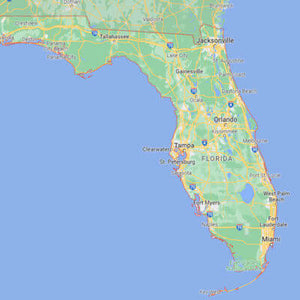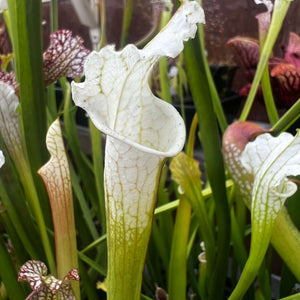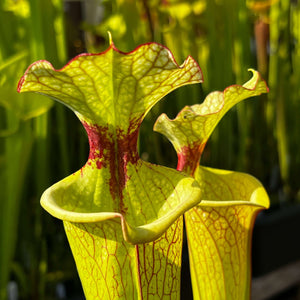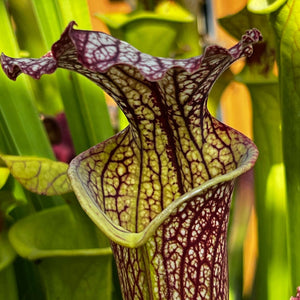Description of Iris sibirica (Siberian Flag Iris)
Iris sibirica, or the Siberian Flag Iris, is a hardy perennial plant. It comes from the grasslands and damp meadows of Europe and Asia. This iris brings a relaxed, natural feel to gardens. It is a plant that combines good looks with a tough nature.
Appearance and Key Features
The Siberian Flag Iris grows in neat clumps. It typically reaches a height between 80 and 120 cm. The spread of each clump is about 45 to 60 cm.
In late spring and early summer, the flowers appear. They are usually a soft violet-blue, but you can find varieties in white and deep purple. Each flower has delicate, drooping petals. These often have small yellow or white markings at their base. The leaves are narrow and grass-like. They form a green fountain shape that looks good all season.
How to Grow Iris sibirica Successfully
This plant is adaptable but has some clear preferences.
Soil and Water: Iris sibirica likes soil that stays moist. Rich, loamy soil is ideal. It is a great choice for the edge of a pond or a damp border. While it can handle drier spells once established, it performs best with consistent moisture.
Sunlight: Plant it in a spot that gets full sun for most of the day. This ensures it produces plenty of flowers. It can also manage in partial shade, especially in hotter parts of the country.
Hardiness: It is very cold tolerant. It handles UK winters with ease.
Simple Care and Maintenance
Looking after this iris is straightforward.
Divide the clumps every three to four years. Do this in early spring or late summer. Division keeps the plant vigorous and gives you new plants for free. You can also grow it from seed. Sow seeds in autumn and they will germinate after the cold winter weather.
Cut the old foliage down to the ground in late autumn. This keeps the garden tidy. A balanced fertiliser applied in spring supports healthy growth. Water the plant during long dry periods.
Garden Uses and Wildlife Benefits
Iris sibirica is a versatile plant. Use it in a mixed border where the soil does not dry out. It is perfect for naturalising in a wilder garden or meadow. Its most obvious place is near water, in a bog garden or at the margin of a stream.
The flowers attract bees and other pollinators. The dense clumps of leaves offer shelter to insects and small creatures. The root system also helps to hold soil in place on damp banks.
Iris sibirica is a reliable and beautiful perennial. It offers graceful flowers and architectural foliage. Its need for moisture makes it a solution for those damp garden spots. It is a plant that brings both style and substance to your planting scheme.

 UK-grown carnivorous plants
UK-grown carnivorous plants



